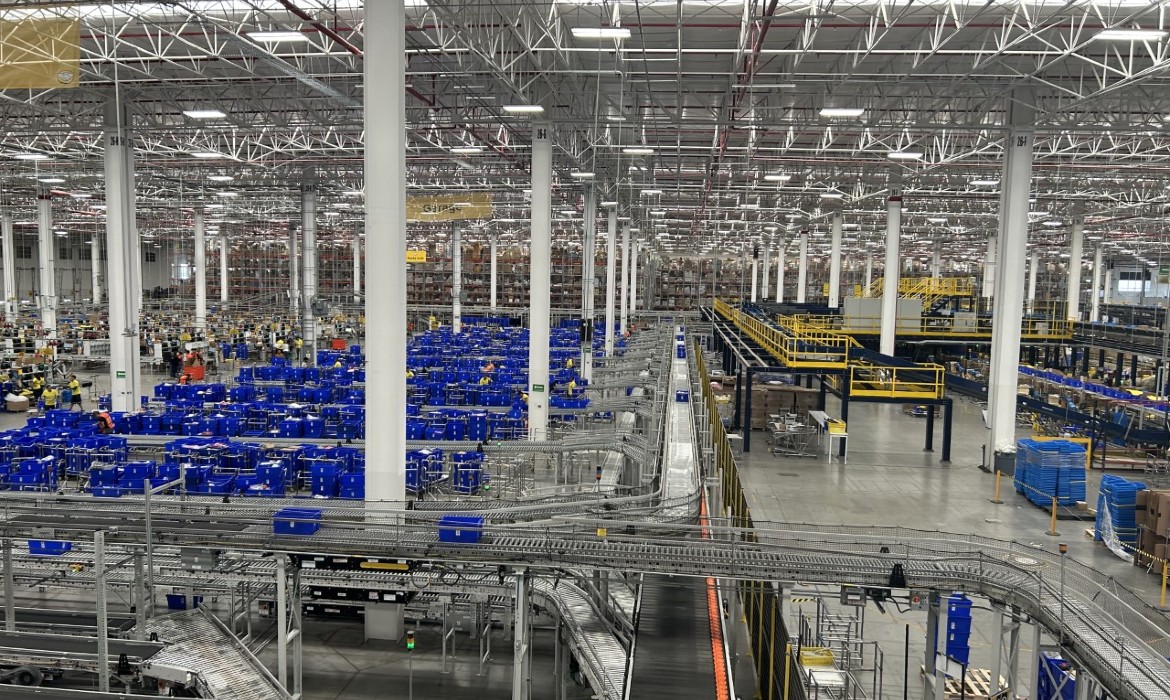
Improvements in technology and cost reduction have significantly boosted the adoption of automation in Mexico, so today solutions are much more robust, stable and easier to maintain, said Hugo Ruiz, founding director of the National Council of Executives in Logistics and Supply Chain (ConaLog) .
In an interview with T21, Ruiz highlighted that a decade ago companies were faced with expensive and unreliable solutions, but this change allows more and more Mexican companies to implement automated distribution centers , as is the case of Coppel , which recently opened one of the most advanced centers in the country.
On the other hand, Ruiz emphasized that the goal of automation should not be the total replacement of labor, but rather to relieve areas that require greater physical effort and are more prone to turnover.
“The idea is not to eliminate all human work, but to adopt a hybrid approach where automation is implemented in the parts that hurt the most,” he said.
This makes it possible to address issues such as a lack of manpower in certain locations, where it is difficult to find skilled or experienced employees.
In this regard, Hugo Ruiz said that the industry is moving towards collaborative automation , which involves humans and robots working together.
While some positions are affected, mainly low-skilled ones, the need for talent to oversee and maintain these systems increases.
“The lack of qualified workers is one of the great challenges facing the industry. We need to train technicians specialised in automation and digitalisation, not necessarily engineers, but technical personnel prepared to keep robots, cranes and systems operating,” he added.
In addition to improving efficiency, automation offers a solution to the space problem , as many companies are opting for vertical structures to maximize capacity on smaller land areas.
“The lack of land in industrial areas is forcing companies to build upwards. It is now possible to double storage capacity by building up to 12 floors, which allows for optimising space and reducing costs,” said Ruiz.
The specialist shared that despite this, the logistics industry faces crucial challenges , including a notable shortage of trained talent and the need to implement technologies that make operations more efficient and sustainable.
One of the most relevant challenges for Ruiz is the justification of the return on investment (ROI) in automation projects, considering the size of the initial investment.
“Each company has different financial policies; some can accept an ROI of up to 10 years, while others seek to recover it in less than five,” he said.
Implementing advanced technology requires ensuring that the long-term benefits justify the investment, so Ruiz anticipated that with more affordable technology, the return on investment will be more favorable, motivating more companies to explore automated solutions.
Likewise, according to Hugo Ruiz, one of the fundamental aspects before starting an automation process is to ensure that it is aligned with the company’s strategy .
“It is essential to understand the company’s strategies and ensure that the project is fully aligned with them,” he explained.
He said that before investing in technology, a thorough analysis of critical points or bottlenecks in the operation must be carried out, prioritizing the areas where automation can make a significant difference in productivity and efficiency.
The future of automation
Ruiz sees the future of automation in Mexico pointing to accelerated growth of automated distribution centers.
He also stressed the importance of investing in human capital training to ensure that systems are implemented effectively.
Furthermore, the advancement of artificial intelligence will transform automation systems into smarter and more adaptive tools.
“Automation solutions with artificial intelligence will begin to make decisions autonomously, optimizing warehouse space and improving inventory management,” he said.
For Hugo Ruiz, the key for the Mexican logistics industry to advance in automation is a collaboration between the private sector , academia and the government, to train the talent that the country needs.
Comment and follow us on X: @jenna_GH_ / @GrupoT21















